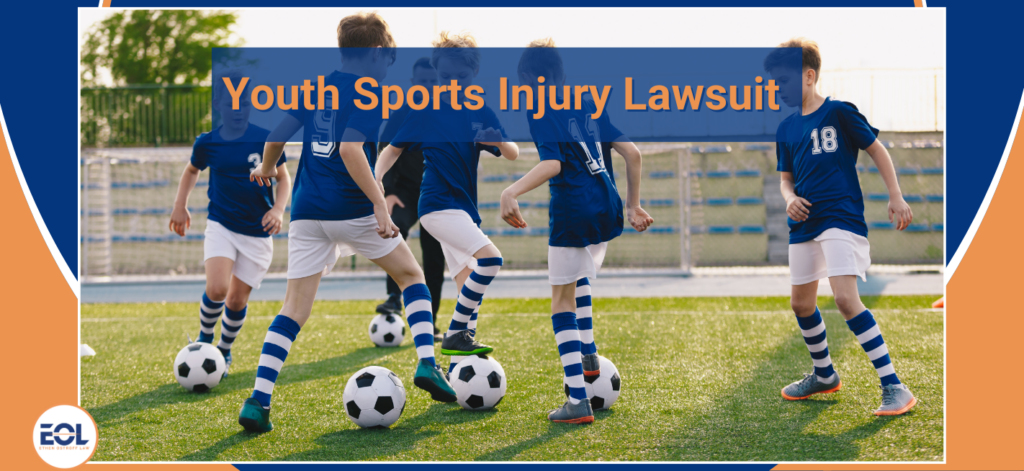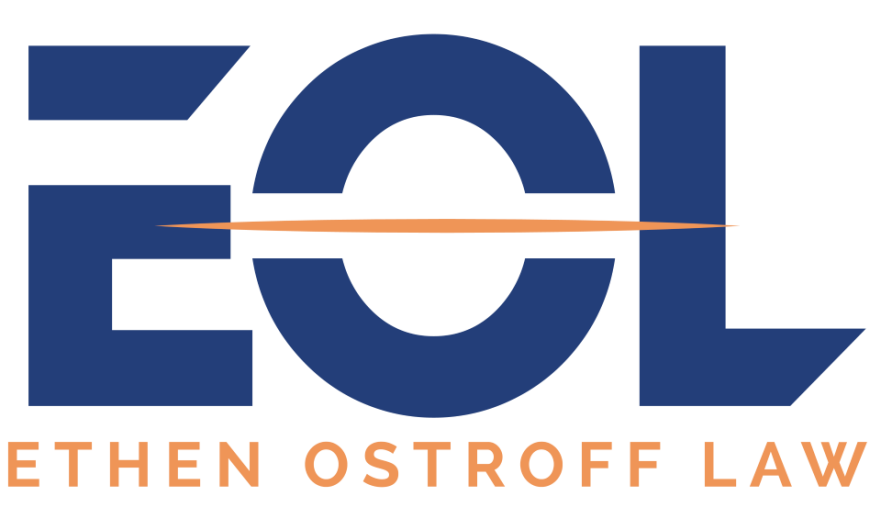Pursuing Youth Sports Injury Lawsuit with Ethen Ostroff Law
Youth sports are a fundamental aspect of many children’s lives, offering opportunities for physical activity, skill development, and social interaction. However, alongside the countless benefits, there is an inherent risk of injury. When an injury occurs due to negligence or misconduct, pursuing legal recourse becomes essential. Ethen Ostroff Law specializes in navigating the complex terrain of a youth sports injury lawsuit. In this article, we analyze the intricacies of such cases, exploring common scenarios, legal considerations, and how our firm can guide you through the process.
Youth Sports Injuries in Figures
Here’s the latest statistics on youth sports injuries:
- Cycling, skateboarding, and skating account for nearly half of all sports-related head injuries.
- Every year, over 3.5 million children aged 14 and under suffer injuries from sports and recreational activities.
- Hospital emergency rooms treat over 775,000 children annually for sports-related injuries, often stemming from falls or collisions.
- Sports contribute to around 21% of all traumatic brain injuries in American children.
- Though rare, brain injuries are the leading cause of fatalities in sports-related incidents.
Types of Injuries from Youth Sports
Youth sports injuries range from minor sprains to more severe fractures and head trauma. Common types include:
- Abrasions and lacerations: Cuts, scrapes, or abrasions from contact with rough surfaces or equipment.
- Concussions: Head injuries, causing symptoms from mild confusion to loss of consciousness.
- Contusions: Bruises from ruptured blood vessels due to direct impact or trauma.
- Dislocations: Joints displaced by impact or twisting, requiring medical intervention.
- Epiphyseal injuries: Damage to growth plates at bone ends, affecting bone growth.
- Fractures: Broken bones from falls, collisions, or stress.
- Growth plate injuries: Susceptible bones’ growth plates damaged by sudden impacts or stress.
- Heat-related illnesses: Heat exhaustion or stroke from inadequate hydration and rest.
- Overuse injuries: Muscles, tendons, or bones stressed by repetitive activities.
- Sprains and strains: Ligaments or muscles overstretched or torn from sudden movements or bad landings.
Youth Sports with the Most Injuries
Youth sports vary in their injury rates due to factors like physical demands and contact levels. Here are some sports often associated with higher injury rates:
- Basketball: Combines running, jumping, and physical contact, leading to injuries like sprained ankles, knee injuries, fractures, and concussions.
- Cheerleading: Involves acrobatic stunts, tumbling, and lifting, posing risks of falls, sprains, strains, fractures, and head injuries.
- Football: High-contact nature results in injuries like concussions, sprains, strains, fractures, and contusions.
- Gymnastics: Requires strength, flexibility, and precise movements, leading to overuse injuries, fractures, sprains, and strains, as well as falls from apparatuses.
- Ice Hockey: Fast-paced, high-contact sport with risks of collisions, falls, and puck-related injuries, including concussions, fractures, sprains, strains, and lacerations.
- Lacrosse: Combines running, stick handling, and physical contact, resulting in concussions, fractures, sprains, strains, and bruises.
- Soccer: Involves frequent running, jumping, and contact, leading to injuries like sprains, strains, fractures, and concussions, along with overuse injuries.
- Wrestling: Physically demanding with close contact, leading to sprains, strains, fractures, and contusions, as well as skin infections.

Causes of Injuries in Youth Sports
While some injuries are unavoidable, others stem from negligence or a lack of proper supervision. Common causes of youth sports injuries include:
- Collision and contact: Direct contact during sports like football or hockey can lead to traumatic injuries.
- Fatigue: Exhaustion during prolonged play can lead to poor decision-making and injury.
- Growth spurts: Rapid growth can result in muscle imbalances and susceptibility to injuries.
- Improper equipment: Ill-fitting gear fails to provide adequate protection, leading to injuries.
- Inadequate training: Poor technique and conditioning increase injury risk.
- Inadequate warm-up: Skipping warm-ups can lead to muscle strains and ligament injuries.
- Lack of supervision: Inadequate supervision can result in risky behaviors and preventable injuries.
- Mental stress: Pressure to perform can impair concentration and increase injury risk.
- Overuse: Repetitive motions without rest can lead to overuse injuries like stress fractures.
- Unsafe playing conditions: Uneven surfaces and poor lighting contribute to accidents.
Liable Parties in Youth Sports Injuries
Determining liability for youth sports injuries can be complex. Potential parties who may be held responsible include:
- Coaches and instructors: Negligent coaching practices or failure to adhere to safety protocols could lead to liability.
- Equipment manufacturers: Defective sports gear may result in liability for design or manufacturing flaws.
- Medical personnel: Improper treatment or negligence by healthcare providers may lead to liability.
- Other players: Intentional harm or reckless behavior by another player could result in liability.
- Parents of minors: In some cases, parents may be responsible for their child’s actions or inadequate supervision.
- Property owners: Property owners may be liable for hazards contributing to an injury on their premises.
- Schools and organizations: Entities organizing sports programs may be liable for inadequate facilities or supervision.
Legal Claims in Youth Sports Injury Lawsuits
Legal claims in a youth sports injury lawsuit can vary. Common claims include:
- Assumption of risk: Participants may be considered to have accepted the inherent risks of the sport, but this defense does not apply to reckless or intentional harm.
- Failure to provide medical care: Those responsible for athlete safety could be liable if they fail to give proper medical attention, worsening the injury.
- Intentional misconduct: Deliberate actions causing harm, like assault, can lead to legal action.
- Negligence: Inadequate care, supervision, or addressing hazards by coaches or organizations may result in injury and legal consequences.
- Parental consent and release: Waivers acknowledging risks can affect liability, though their enforceability varies.
- Premises liability: Property owners may be responsible for injuries on their premises if they do not maintain safety standards.
- Product liability: Manufacturers could be liable for injuries caused by defective sports equipment.
Proving Negligence in a Youth Sports Injury Lawsuit
Proving negligence in a youth sports injury lawsuit involves these key elements:
- Duty of care: Showing that the defendant, such as coaches or organizations, had a responsibility to ensure the athlete’s safety during sports activities.
- Breach of duty: Demonstrating that the defendant failed to meet this duty by not taking reasonable precautions to prevent the injury, like inadequate supervision or addressing hazards.
- Causation: Establishing a direct link between the defendant’s breach of duty and the injury, indicating it would not have occurred otherwise.
- Damages: Proving actual harm resulting from the injury, including medical expenses, pain and suffering, lost wages, and other losses.

Evidence and Strategies for a Successful Youth Sports Injury Lawsuit
Here are the key evidence and strategies for a successful youth sports injury lawsuit:
- Comparative negligence: Understanding and countering claims of the injured athlete’s contribution to the injury is crucial in establishing liability.
- Documentation: Medical records, incident reports, and other evidence help outline the injury’s extent and subsequent medical needs.
- Expert testimony: Expert opinions from medical professionals or sports safety specialists clarify the standard of care in youth sports and whether the defendant fell short.
- Eyewitness testimony: Statements from witnesses, including coaches and players, provide valuable insights into the circumstances surrounding the injury.
- Regulatory compliance: Showing adherence to laws and standards governing youth sports activities strengthens the case by demonstrating the defendant’s duty of care and potential breaches.
Compensations Available in Youth Sports Injury Cases
In youth sports injury cases, various compensations may include:
- Disability and impairment: Payment for permanent limitations from the injury.
- Funeral and burial expenses: Coverage for wrongful death cases.
- Legal fees and costs: Reimbursement for attorney’s fees.
- Loss of consortium: Compensation for strained relationships.
- Lost income: Payment for missed wages.
- Medical expenses: Coverage for medical bills.
- Pain and suffering: Damages for physical and emotional distress.
- Punitive damages: Extra compensation for intentional harm.
Consulting a personal injury attorney ensures understanding of available compensation and protection of rights.
Youth Sports Injury Claims and Settlements
When a child sustains an injury in youth sports, the complexities of liability often come into sharp focus. Determining fault and responsibility in a youth sports injury lawsuit hinges on a range of factors, ranging from the supervision provided by coaches to the maintenance of sports facilities. It is paramount to understand youth sports injury liability in pursuing a child sports injury claim, as it involves meticulous examination of the circumstances surrounding the incident. At the heart of every youth sports injury claim lies the pursuit of justice and accountability for the harm inflicted upon the young athlete.
Once liability is established, negotiations for a youth sports injury settlement commence, aiming to secure fair compensation for the injured child and their family. This process requires diligent legal representation. Every aspect of the youth sports injury lawsuit demands meticulous attention to detail. Through strategic negotiation and unwavering dedication, getting a favorable settlement becomes a tangible step towards achieving closure and providing the injured child with the support they need to move forward.
Why Hire Ethen Ostroff Law?
At Ethen Ostroff Law, we’re dedicated to supporting injured children and their families through personalized, compassionate, and aggressive legal representation. Here is how we can assist you:
- Free case evaluation: We offer free initial consultations to assess your case, gather evidence, and discuss your legal options.
- Compassionate support: We understand the emotional impact of youth sports injuries and provide clear communication and support throughout the legal process.
- Comprehensive representation: From negotiations to court proceedings, we handle all aspects of your case to secure maximum compensation for medical expenses, pain and suffering, and other damages.
- Expert collaboration: We work with medical and accident specialists to strengthen your case and counter any defenses raised by the opposing party.
Navigating a youth sports injury lawsuit demands legal expertise. Ethen Ostroff Law possesses the knowledge, experience, and commitment to vigorously advocate for injured children and their families. If your child has suffered injury due to negligence or misconduct in a sports environment, don’t delay seeking legal guidance. What are you waiting for? Contact Ethen Ostroff Law now at 610-510-8883 ( by calling this number, you consent to receive SMS updates from Ethen Ostroff Law) or Submit Form to get free consultation. Initiate the path towards obtaining the compensation and justice your child rightfully deserves.


